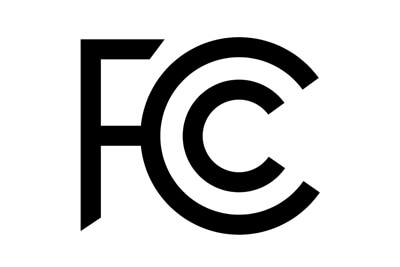

Certification Introduction
The full name of the FCC is the Federal Communications Commission, established in 1934 by COMMUNICATION ACT, it is an independent agency of the U.S. government and is directly accountable to Congress. The FCC coordinates domestic and international communications by controlling radio, television, telecommunications, satellite and cable. Involving more than 50 states in the United States, Columbia and the United States In order to ensure the safety of radio and wire communication products related to life and property, the FCC Engineering and Technology Department is responsible for the technical support of the committee and is responsible for equipment approval. Many radio application products, communication products and digital products require FCC approval to enter the US market.
Authentication type
On November 2, 2017, the FCC merged DoC and Verification into SDoC (Supplier's Declaration of Conformity). SDoC certification will replace the FCC Verification and DoC certification procedures. All equipment applicable to the FCC Verification and DoC certification procedures are taken by SDoC certification procedures.
The FCC has two different certification methods for the types of electronic products: FCC SDoC and FCC ID (Certification). The former is suitable for ordinary products without wireless functions, and the latter is suitable for products with wireless functions.
Comparison between FCC SDoC and FCC ID
FCC SDoC | FCC ID | |
Applicable Products | Ordinary products without wireless functions, such as display screens, lamps, etc. | Products with wireless functions, such as mobile phones, Bluetooth headsets, etc. |
Test content | Electromagnetic Compatibility EMC | Electromagnetic compatibility EMC+RF |
Certification fee | Low | high |
test period | short | long |
Applicable product scope
1. Power supply: communication power supply, switching power supply, adapter, wireless charging, charger, display power supply, LED power supply, LCD power supply, UPS, etc.;
2. Lamps: ceiling lamps, wall lamps, chandeliers, track lamps, garden lamps, portable lamps, down lamps, street lamps, string lights, table lamps, floor lamps, grill lamps, aquarium lamps, energy-saving lamps, LED street lamps, LED desk lamps, LED floor lamps, LED ceiling lights, LED spotlights, LED bulbs, LED tubes, LED lamps, energy-saving lamps, T8 lamps, etc.;
3. Household appliances: refrigerators, washing machines, electric fans, tower fans, bladeless fans, air-conditioning fans, mobile air conditioners, humidifiers, dehumidifiers, clothes dryers, clothes dryers, air purifiers, fresh air systems, vacuum cleaners, cleaning machines, Mite removal machine, sweeping robot, air conditioner, range hood, dishwasher, electric oven, disinfection cabinet, integrated stove, commercial kitchen equipment, electric water heater, air energy water heater, electric hot water faucet, water purifier, water dispenser, juicer , juice maker, wall breaker, coffee maker, bread maker, electric oven, air fryer, egg beater, electric stew pot, cooking machine, rice cooker, yogurt maker, noodle maker, electric pressure cooker, soy milk maker, Microwave oven, induction cooker, electric ceramic cooker, electric cake stand, electric kettle, hair dryer, beauty instrument, facial cleanser, hair curler, hair straightener, hair clipper, shaver, oral care, epilator, massage chair, massager, weight scales, etc.;
4. Electronics: TV, audio, power amplifier, DVD, VCD, projector, camera, monitor, computer, server, scanner, printer, copier, earphone, mouse, keyboard, router, mobile phone battery, laser pointer, etc.;
5. Communication products: telephones, fax machines, telephone recorders, data machines, data interface cards and other communication products.
6. Wireless products: Bluetooth BT products, tablet computers, wireless keyboards, wireless mice, wireless readers, wireless transceivers, wireless walkie-talkies, wireless microphones, remote controls, wireless network devices, wireless image transmission systems and other low-power wireless products Wait;
7. Wireless communication products: 2G mobile phone, 3G mobile phone, 3.5G mobile phone, 4GS mobile phone, Internet card, DECT mobile phone (1.8G, 1.9G frequency), wireless walkie-talkie, etc.;
8. Machinery: gasoline engine, electric welding machine, CNC drilling machine, tool grinder, lawn mower, washing equipment, bulldozer, elevator, punching machine, dishwasher, water treatment equipment, gasoline welding machine, printing machinery, woodworking machinery, rotary Drilling rigs, lawn mowers, snow blowers, excavators, printing presses, printers, cutters, road rollers, trowels, brush cutters, hair straighteners, food machinery, lawn machines, etc.;
FCC common standards
As follows, FCC PART 15 and PART 18 are the most widely used:
FCC standard application scope
FCC PART15 C/E/F Intentional Radiation Device Test
FCC PART 18 Industrial, Scientific and Medical Equipment
FCC PART 22 Public Mobile Communication Services
FCC PART 24 Personal Communication Services
FCC PART 25 Satellite Communication Services
FCC PART 27 Other FCC wireless communication services
FCC PART 68 Telecommunications Terminal Equipment
FCC Part 15 regulates transmitting equipment that is intentional, unintentional, or transient and does not require a personal license for use. It includes technical specifications, administrative requirements and other market access conditions. Products are mainly divided into four categories: unintentional launch equipment, intentional launch equipment, license-free personal communication equipment, and license-free national basic information equipment.
FCC Part 18 regulates the emission of electromagnetic energy by industrial, scientific, and medical equipment (ISM) operating on a certain frequency spectrum to avoid harmful interference to authorized wireless communication services.
application process
1. The customer submits the application form to the testing agency;
2. The customer prepares testing samples (wireless products require a fixed frequency machine), and provides product information (see data requirements);
3. The testing agency issues a draft report, the customer confirms, and issues a formal report;
4. If it is an FCC sDoC, the project is completed; if it is an application for an FCC ID, submit a report and technical data to TCB;
5. After the TCB audit is completed, the FCC ID certificate is issued, and the testing agency sends an official report and FCC ID certificate;
6. The enterprise obtains the FCC ID certificate. After certification, you can use the FCC logo and related Statements on the product;
Note: Manufacturers applying for FCC ID certification for the first time need to register with the FCC for FCC-FRN to establish an application company file. The certificate issued after the TCB audit completed will have FCC ID Number, usually FCC ID is composed of "Grantee code" + "Product code".
Manufacturer code: It is a three-digit number or capital letter, issued directly by the FCC;
Product code: It is composed of numbers, letters, and "-", but there cannot be two or more consecutive "-" used, the first and last digits can not use "-", the maximum number of digits in this code is no more than 14 digits, and the number can be customized by the customer.
Application documents
1. User manual
2. Block Diagram
3. Operation Description
4. Circuit schematic
5. RF modulation mode RF modulation
6. Rated Power Declaration
7. Application form TCB Form 731
8. Authorization Letter POA
9. FCC Confidential Letter
Note: The list of materials and requirements to be submitted for FCC ID certification are as follows:
(1) FCC application form: application company name, address, contact information, product name and model, usage standards and other information requirements;
(2) FCC authorization letter: it must be signed and stamped by the contact person of the applicant company and scanned into an electronic file;
(3) FCC confidential letter: the confidential letter is an agreement signed by the applicant company and the TCB agency to keep product information confidential , to be signed and stamped by the contact person of the applicant company and scanned into an electronic file;
(4) Block diagram: All crystal oscillators and the frequency of the crystal oscillator need to be drawn and consistent with the circuit diagram;
(5) Circuit diagram: It must be the same as the one in the block diagram. The frequency of crystal oscillator, the number of crystal oscillators and the position of crystal oscillator are the same;
(6) Line description: the requirement is in English, and the function realization principle of the product is clearly described;
(7) Instruction manual: FCC Statement is required;
(8) Label and label position: the label must be There are FCC ID numbers and Statements, and the location of the label is required to be obvious;
(9) Photos of the inside and outside of the product: the pictures are required to be clear and clear, and remarks are added if necessary;
(10) Test report: the test is required to be completed, and the product is fully evaluated according to the standard terms;